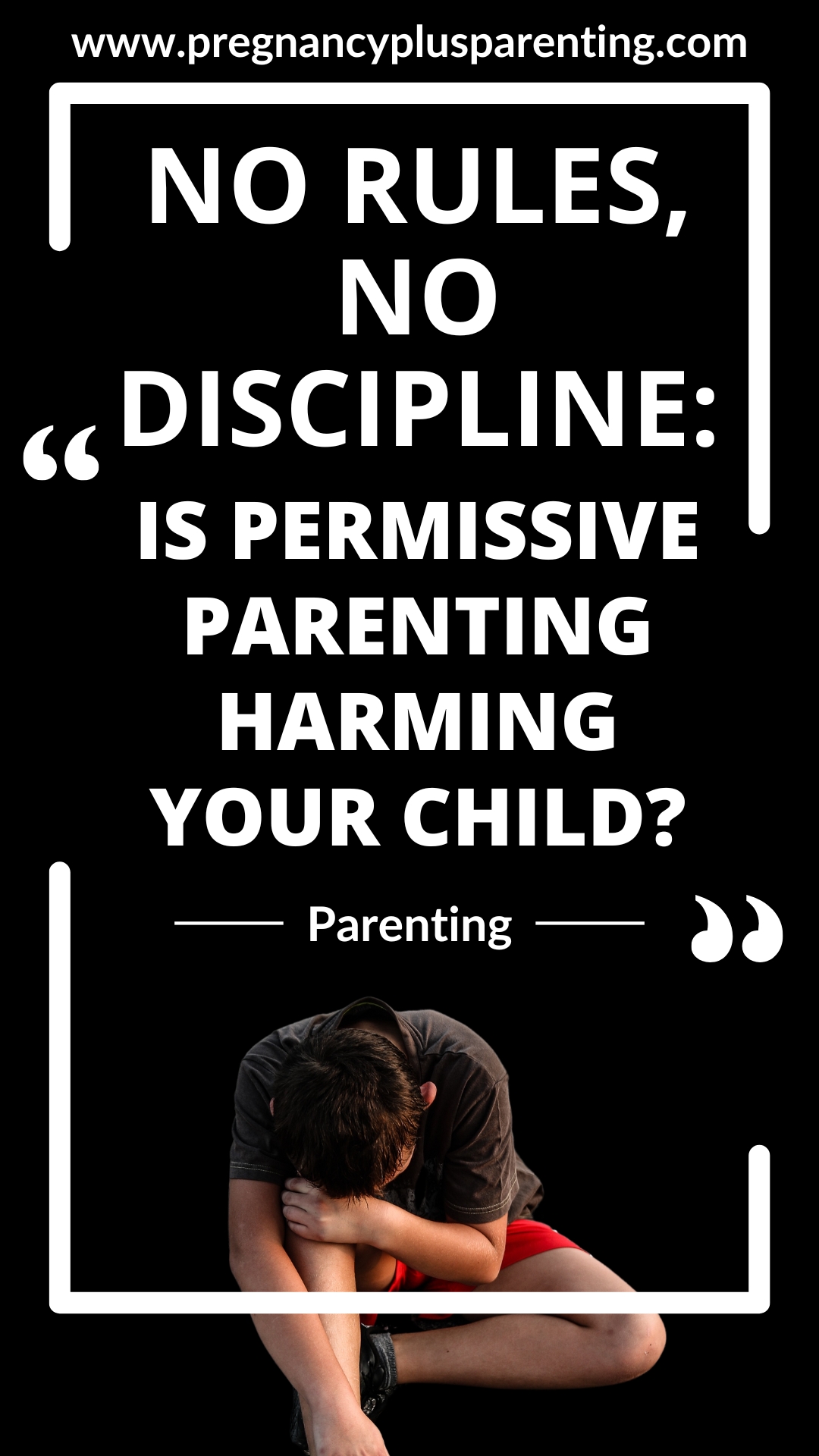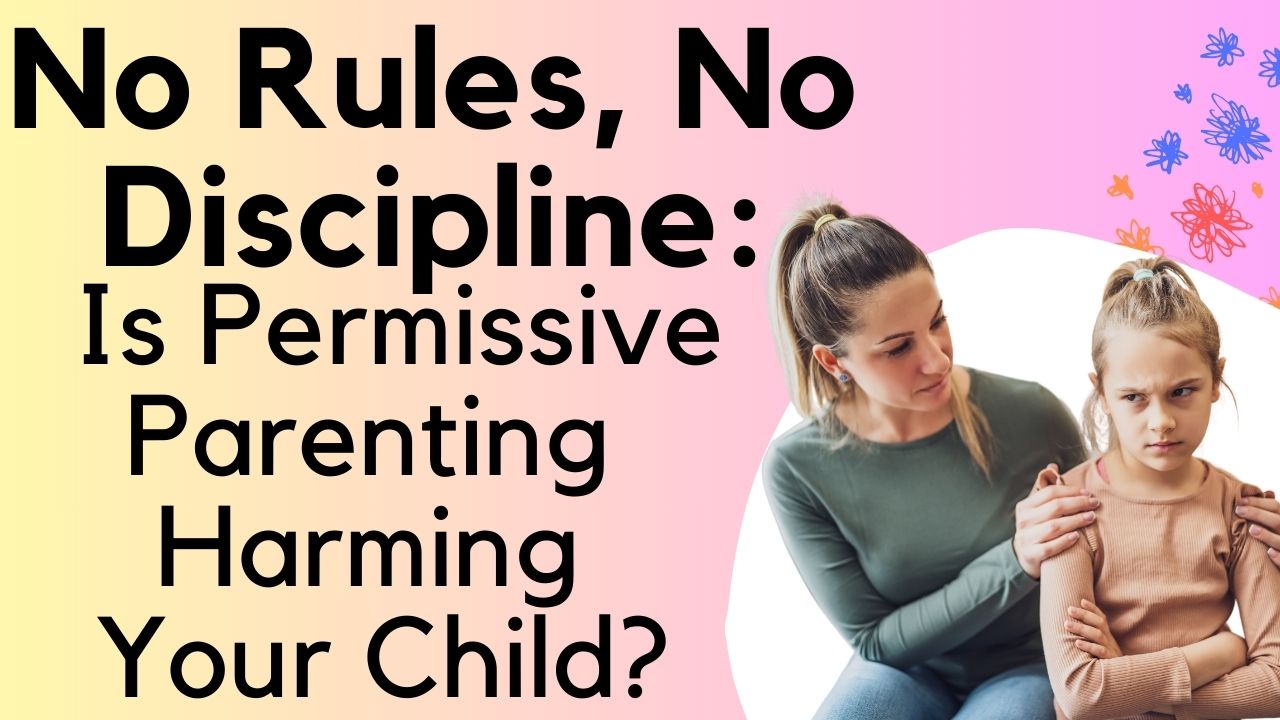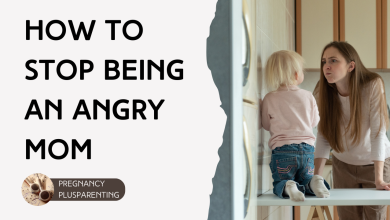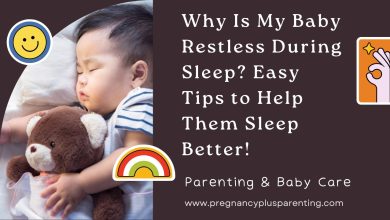No Rules, No Discipline: Is Permissive Parenting Harming Your Child?
What characterizes the permissive parenting style and how does it differ from others?
Many women begin to find out about different parenting methods while they are pregnant, because in such a complex matter as raising their own child, you don’t want to make any mistakes.
Perhaps you are familiar with authoritarian and anti-authoritarian parenting, but you need more information beyond that?
Most of us have had a different kind of upbringing than is common today.
In order to be able to deal with your own attitudes and behaviors more reflectively, it makes sense to inform yourself about the different parenting styles.
Who coined the term “permissive parenting” and why? How does this parenting style manifest itself in everyday life?
What are the advantages and disadvantages of using the permissive parenting style in the family?
Is there such a thing as the right parenting method? What’s currently trending and why?
In this article you will find the answers.
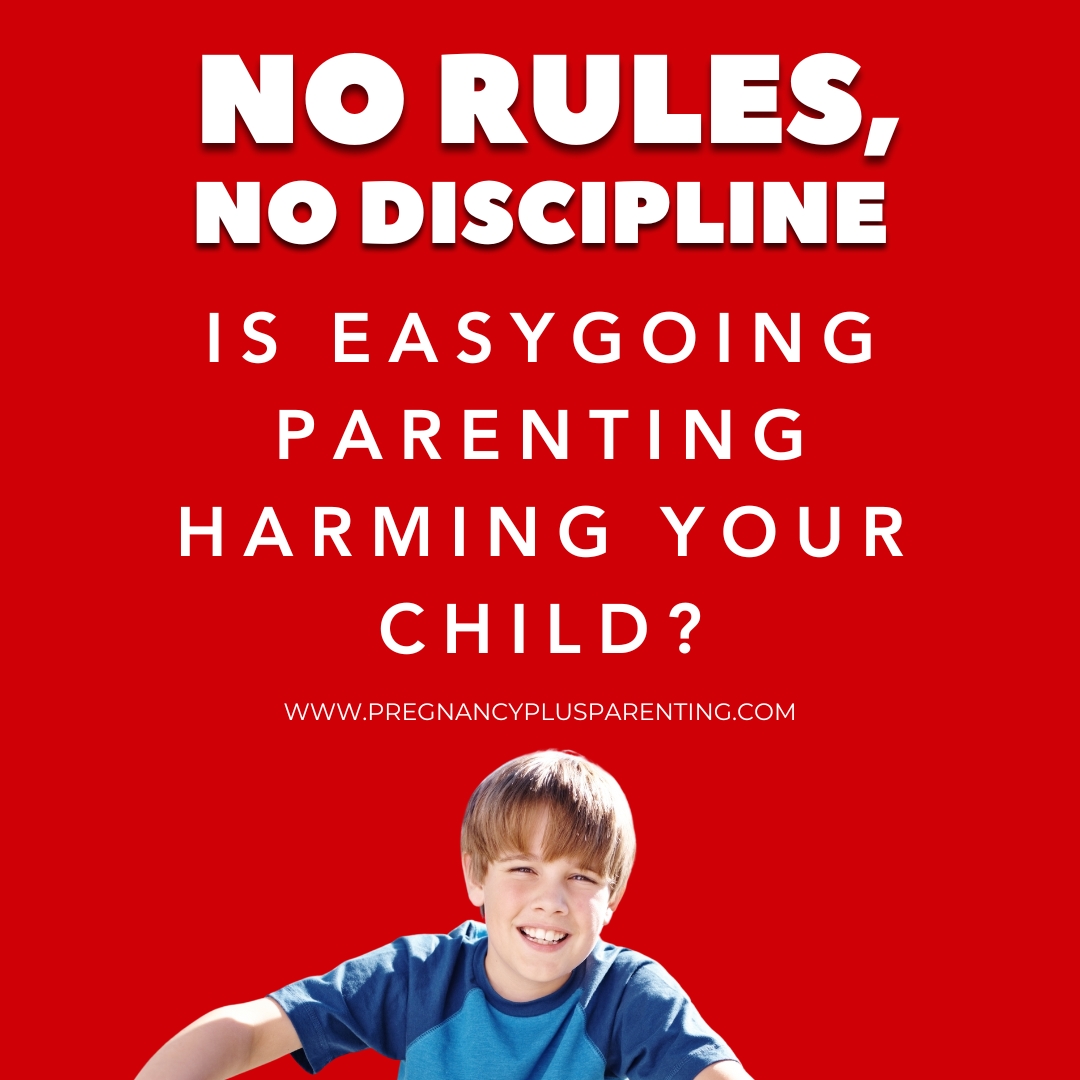
Education through the ages
New parents often want precise instructions on how best to deal with their child.
How a mother or father can make the best decision for their child and what is actually best for the child are questions to which there are no general answers.
Although there are numerous guides and educational books on the subject of parenting, ultimately no one knows the child better than the parents and no one can take away the decision about how to raise them.
It is important to be aware that you always have a choice when it comes to parenting methods and that your own parenting style can be conscious or unconscious and also depends on certain factors over which you have no influence.
On the one hand, there is the way in which you were raised as a child, which had a significant influence on your personality development.
On the other hand, there are social trends at play that uphold certain parenting styles and frown upon others.
We all know that the educational methods that prevailed during the imperial era in the distant 19th century, and even more so during the Third Reich, are today considered to be serious errors and mistakes.
Not so long ago, however, it was common practice to raise children with strictness to be submissive and obedient to authority, something that is now considered toxic .
There was no room for individual needs and self-development, neither for adults nor for children.
Thus, the “strong hand” from above dictated how one should behave, using force if necessary. Corporal punishment was common practice.
A vivid example of earlier views is Struwwelpeter, a picture book by the Frankfurt psychiatrist and physician Heinrich Hoffmann from 1845, which is still well known today.
In several stories, the picture book’s title character suffers such drastic consequences (from falling into water to losing fingers to death) due to careless or misbehavior that the stories were discarded in the 1970s and 80s.
By then, however, Struwwelpeter had become one of the most successful German children’s books ever and had been translated and adapted into many languages.

In fact, it wasn’t until the postwar period that attitudes changed. Today, Struwwelpeter, corporal punishment, and similar methods of autocratic parenting are considered inadequate, frowned upon, cruel, and sometimes even forbidden.
Since 1968, a new generation of parents has provided a counter-pole, namely the anti-authoritarian parenting style as a reaction to the disastrous leader-mania of their own parents.
It was almost revolutionary to give children the power to make their own decisions instead of restricting them with rules and prohibitions and punishing them.
Ultimately, the aim is to raise independent and critically thinking individuals who have a high degree of personal responsibility.
However, like any extreme, this style of education has also brought with it significant disadvantages, so that views have changed over time and democratic education is now considered the golden mean.
The child’s needs and wishes are balanced by regulations and rules.
When it comes to parenting methods, today we differentiate between parenting styles based on the degree of parental authority and warmth and affection.
Being a mother is a living experience, so mixed forms are particularly common, as there are hardly any parents who consciously or unconsciously stick to only one parenting style and parenting styles often differ among parents.
Permissive parenting style – who coined the term?
It was an Austrian psychologist who was the first to categorize educational methods in the 1930s.
Even back then, the Austrian Kurt Lewin, who lived in the USA, had distinguished between three parenting styles: authoritarian, democratic and laissez-faire parenting.
The laissez-faire style is essentially not parenting, as the parent is completely uninvolved and there are no boundaries or rules for the child at all.
Parents or caregivers show no interest in the child and do not or very rarely take his or her views into account.
They only do as much as is absolutely necessary and behave so indifferently towards the child that it can even lead to neglect.
The term permissive parenting style was coined in the USA in the 1960s.
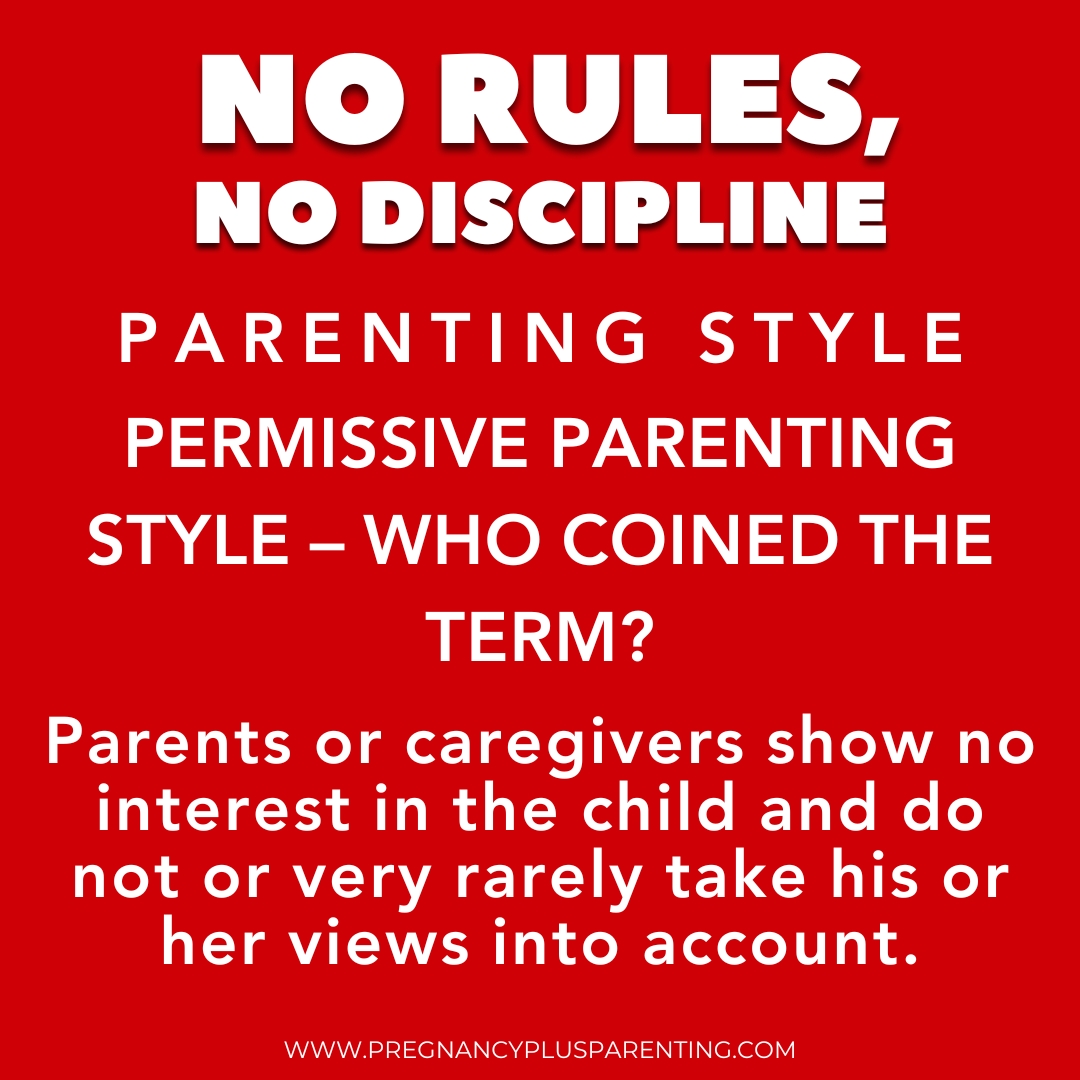
Developmental psychologist Diana Baumrind first used the term when she studied the effects of parenting on children’s development.
In her research, she distinguished between authoritative, authoritarian, and permissive parenting styles. Permissive parenting is a form of anti-authoritarian parenting.
Later, psychologists Eleanor E. Maccoby and John A. Martin further differentiated this parenting style into a neglectful and a pampering form.
Permissive parenting style – what characterizes it?
When it comes to authority, the permissive parenting style is characterized primarily by compliance and tolerance toward the child. There is not only no punishment, but also no rules or guidelines, and no control.
Parents do not interfere in the child’s development. Nevertheless, they usually convey warmth and affection. Similar to the laissez-faire style, children are given complete freedom in their self-development.
The fact that the child is under a lot of pressure with a permissive parenting style sounds strange at first.
But since the parent or guardian only responds to the child when the child is sure of his or her needs and can express them, the child must take the initiative and become active.
The permissive parenting style is expressed through the following basic attitudes and behaviors:
• The caregiver does not interfere in the game.
• The relationship with the child is characterized by a certain distance.
• In contrast to neglectful parenting (laissez-faire style), the child’s wishes and needs are taken seriously.
• The child must request participation, support and help.
• No suggestions are made to the child.
• There are hardly any rules.
• Penalties for serious misconduct are extremely rare.
• The child is not given any instructions to avoid steering him or her in a particular direction.
• There is neither reprimand nor praise because no specific behavior is required from the child.
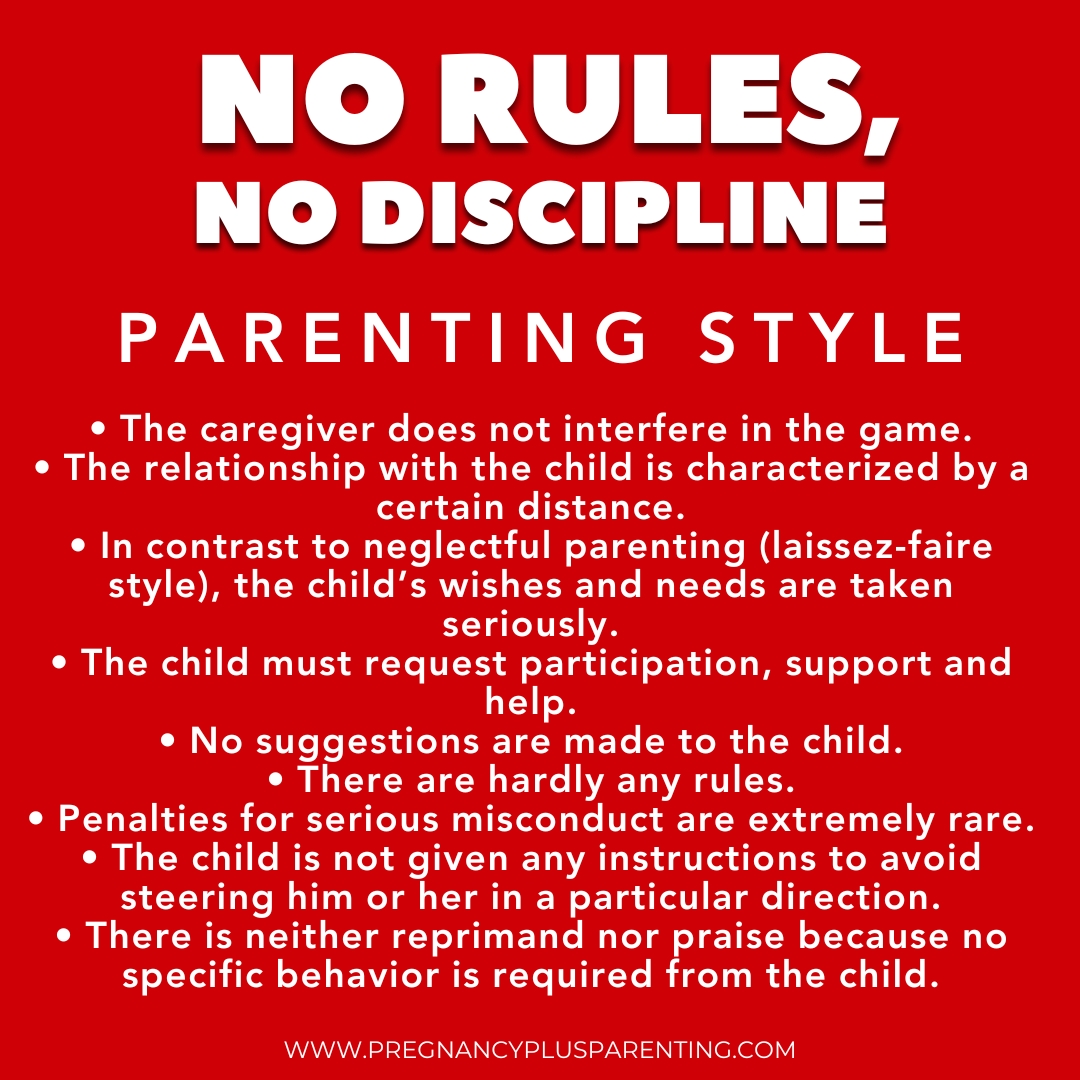
Unlike the laissez-faire parenting style, the permissive style does have certain advantages, but the negative effects on child development clearly outweigh the negative ones.
The permissive parenting style makes parenting easier for parents because they largely stay out of the child-rearing sphere. Clear rules and attention are lacking.
Proponents of this method may emphasize the advantages that the permissive approach brings, for example, in leisure activities.
The restraint of the caregivers can have a positive effect on the child’s creativity, initiative and opinion formation.
However, in order for a child to be able to perceive their own needs and develop properly, they need guidance and positive relationships.
If a child does not experience closeness and devotion from its caregiver, it will not be able to form close emotional bonds with others later on.
In addition, poor social skills, a lack of empathy, difficulties in dealing with rules and authorities, and behavioral problems such as aggression are at risk in later life .
The disadvantages of the permissive parenting style clearly outweigh
Psychologists and educators agree that children need a stable framework, rules, and boundaries that provide guidance and security. The family, as a protected space, should provide all of this.
This is of course not a plea for authoritarian parenting, which clearly restricts the child’s behavior and does not tolerate any contradiction or rebellion.
An escalation of this method can be understood as an autocratic parenting style, which is also accompanied by threats and intimidation.
No, children should have room to make personal decisions from an early age, to try things out. In itself, that’s far from being pampering.
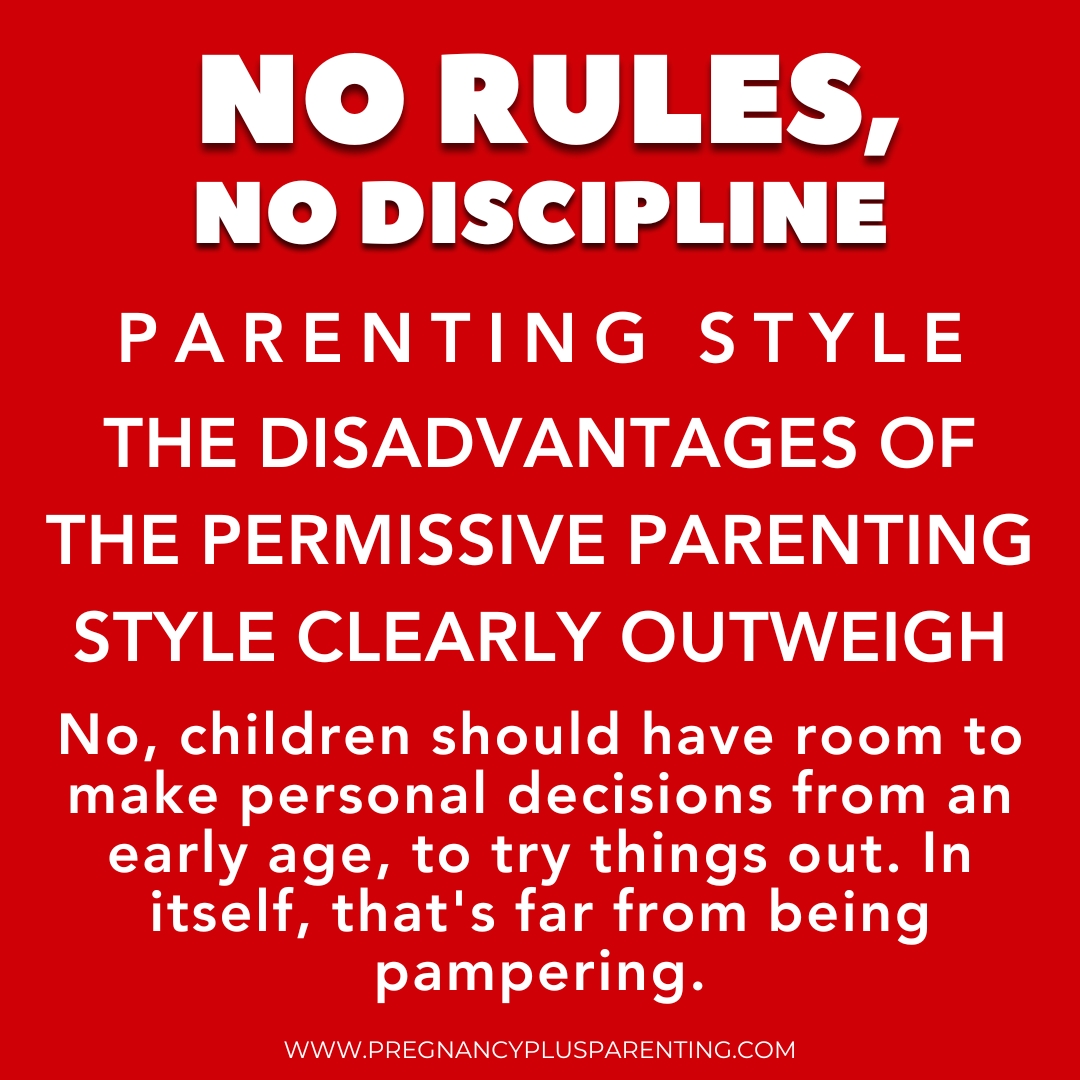
But it is also necessary that they know what is acceptable in society and what is completely unacceptable.
While it does not make sense to unnecessarily restrict a child’s freedom, parents should not neglect to give instructions and wishes, as well as clear boundaries and praise.
As with most things in life, the right balance is key.
Over the years, it has become apparent that many children and adolescents raised according to the permissive method have difficulty building deep connections with others and have not learned to be considerate of others’ needs.
Since one’s own opinion and ideas are always in the foreground, the course is set for egoism.
While the permissive parenting style has a sensible approach on the one hand, it is very detrimental to integration into society, starting with daycare and school.
It has been proven that a lack of structure and guidance does not raise children to be independent, but on the contrary leads to them becoming dependent.
Practical examples
Your three-year-old son comes up with the idea of painting on the wall.
You explain to him that there is paper, cardboard, and drawing pads for that purpose, and that you don’t paint the wall because it’s so much work to get it clean again.
Permissive parenting style example – Of course, your son isn’t particularly interested in this because he wants to have plenty of space to express himself artistically.
You do not intervene while you watch the child go about his business for what should be a short time, painting the wall.
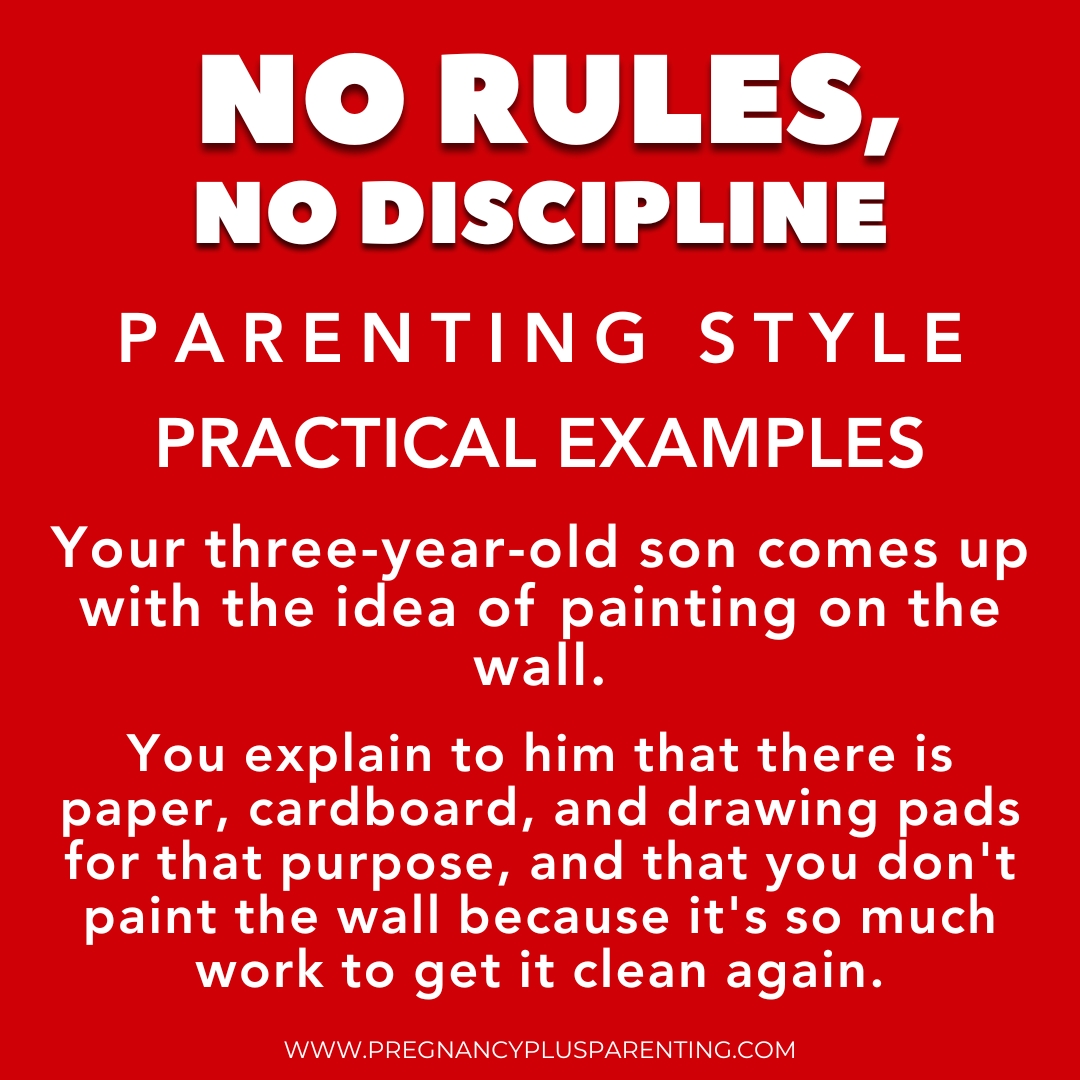
Another example takes place at the playground. Your five-year-old daughter is tired of waiting and pushes another child out of the way to get on the slide.
You do not intervene, even if the other child resists.
And if a primary school child doesn’t feel like doing homework and wants to watch television instead, permissive parents give in and let them do it, pointing out that the homework can be done later.
Whether the child does this, however, remains to be seen.
At the latest in kindergarten, the child’s behavior will attract unpleasant attention, because there are everything that he or she is not used to: community rules and rules of behavior.
The permissive parenting style today
The permissive style has clearly proven to be unsuitable as a sole method and is, at least consciously, rarely practiced.
While the consequences of this style may seem harmless in childhood, it later becomes apparent how willful and irresponsible such parenting behavior actually is.
Strictly speaking, it’s almost a lack of attitude that characterizes the permissive style, and it can be quite convenient for parents. But when it comes to alcohol and drugs, this lack of attitude and setting boundaries can become fatal.
Many parents do not simply follow one parenting method, but develop their own parenting style, which is characterized by different methods.
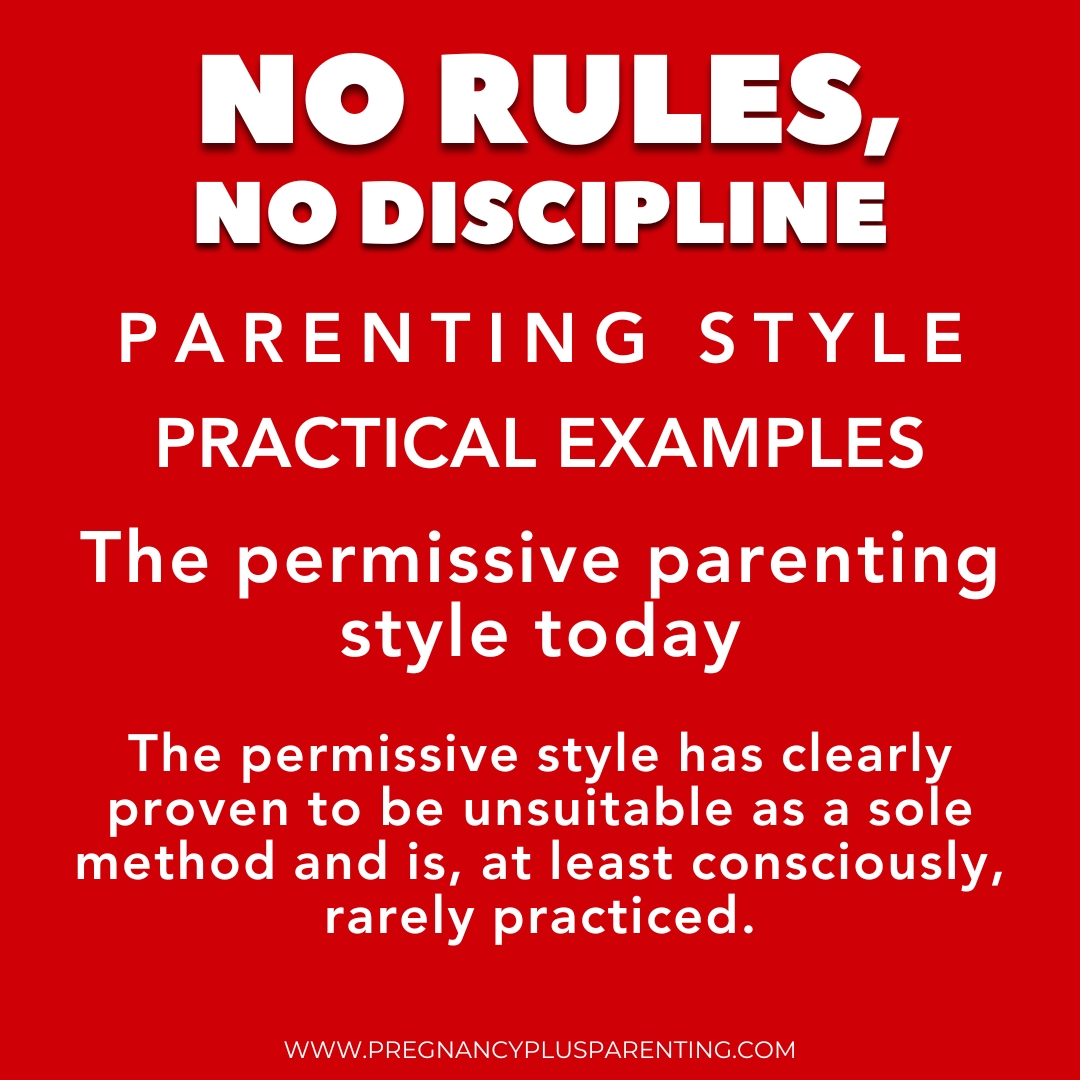
Permissive parenting style, democratic parenting style, authoritative parenting style, egalitarian parenting style – nowadays, mixed forms of these styles are mainly found.
It is important to observe yourself and question why you are using this or that method.
This ensures that no unconscious processes or adverse experiences from the past influence the upbringing of your child.
Final thoughts
Parenting styles refer to basic attitudes of parents towards their children, which are relatively consistent and are expressed and differentiated in certain behaviors.
Since every person is different, all parents have individual parenting styles.
Both the educational goals and the overall educational behavior depend on the values .
For some, it is important that the child develops empathy, while others consider it more important that their child can assert themselves.
In a society, values and norms, and therefore also educational methods, are subject to constant change.
While in the past children were expected to be unconditionally obedient and submissive, today parents and children tend to have a more cooperative relationship.
Different educational approaches can also be clearly observed in different kindergarten concepts, regardless of whether it is a private or public daycare center .
There is no such thing as THE right parenting style. However, some parenting methods have proven unsuitable, including the permissive style, a kind of moderate form of laissez-faire parenting.
Most of the time, permissive parents want the best for their child and shy away from being controlling.
Behind the complete lack of strictness, even if it is sometimes necessary, and the lack of setting boundaries, there is often a fear of losing the child’s trust.
In this article, I explained the benefits of holding back from time to time, but that consistently permissive parenting has serious disadvantages for the child.
